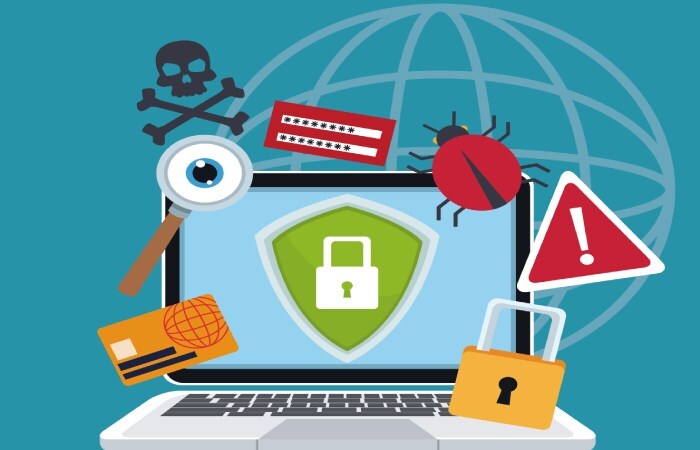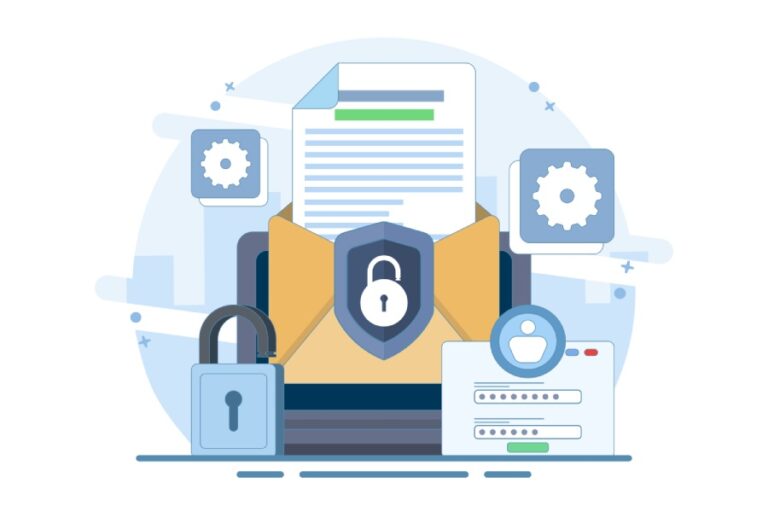What Is Ping Spoofing? Understanding the Technique and Its Impact on Network Security
In the fast-paced world of online connectivity, everything hinges on speed and performance. Ever wondered why your favorite game lags or why a website sometimes takes forever to load? It could be due to a sneaky technique known as ping spoofing. This method not only toys with our perception of network reliability but also raises significant concerns for cybersecurity. While some might think it’s just a harmless trick to improve gaming, understanding ping spoofing is essential as it can lead to far more serious consequences such as data breaches and denied access to services. In this article, we’ll unravel what ping spoofing is all about, its implications, and how you can safeguard your network against this unseen threat.
Ping spoofing is a network manipulation technique used to send misleading responses to ping requests, often with the intent to evade security measures or manipulate network settings. This practice can create false perceptions of latency and may be exploited by malicious actors to disguise their activities on a network, making understanding its implications crucial for maintaining network security.
What is Ping Spoofing?
At its core, ping spoofing is a technique where an individual manipulates network packets sent over the Internet Control Message Protocol (ICMP) to forge or disguise the source of ping requests. This practice allows users to send misleading echo responses, altering the perceived latency and performance of a network connection. Instead of communicating their true network status, they present false information that can mask their activities or optimize their experiences in various online environments.
The primary purpose of ping spoofing is often about obscuring identity. By altering the source IP addresses, attackers can effectively disguise both their origin and intent, making it challenging for security systems and network administrators to pinpoint malicious activities.
Common Uses and Misconceptions
While some may employ ping spoofing as a harmless trick to enhance gaming performance or test bandwidth limits, it’s essential to recognize how this technique can blur the lines between ethical usage and malevolence. A notable aspect of this practice is its potential usage in Denial of Service (DoS) attacks, where countless forged packets can overwhelm a target system. In fact, a 2022 report from the Cybersecurity and Infrastructure Security Agency (CISA) indicated that approximately 30% of organizations had encountered ICMP-based attacks, emphasizing just how prevalent this issue is.

Yet, despite its risks, many users still express interest in manipulating their pings intentionally for various reasons. There are discussions on forums such as Reddit where individuals seek methods for boosting their connections. However, this curiosity often mingles with a misunderstanding of the potential consequences. People searching for ways to game the system might inadvertently lead themselves down more dangerous avenues than they realize.
Addressing Network Security Concerns
Now, you might be wondering if there’s a silver lining to all of this. Well, the good news is that effective network defenses do exist!
Protection against ping spoofing largely revolves around strategies like implementing ingress and egress filtering. By actively monitoring incoming and outgoing traffic and blocking packets with forged IP addresses, organizations can safeguard their networks against much of the damage these attacks can cause. Additionally, utilizing robust network monitoring tools allows for immediate detection of abnormal spikes in ICMP traffic—sudden surges often indicative of a ping spoofing attempt.
However, while these methods are effective deterrents, no security measure is infallible. As technology evolves and attackers refine their techniques, maintaining robust defense mechanisms requires continuous development and vigilance within organizations.
Understanding these complexities around ping spoofing not only clarifies its operation but also highlights its implications on overall network integrity. With this knowledge in hand, we shift our focus now to the fundamental concepts that underlie this technical landscape.

The Basics of a Ping
A ping serves as a fundamental tool for diagnosing network connectivity. By sending an ICMP Echo Request, it tests whether a specific host on an Internet Protocol (IP) network is reachable. Imagine it as sending a friendly tap on the shoulder to check if someone is there; if they respond, you know all is well. This simple yet effective tool helps users identify any connection lag or issues within the network by determining the round-trip time (RTT) for packets sent and received.
When you initiate a ping, three things happen in quick succession. First, the sender sends out the ICMP Echo Request to the target host, waiting patiently for their response. This might feel like sending a text message and waiting for someone to read and reply.
Next, once the target host receives that request, it responds with an ICMP Echo Reply packet, indicating everything is in order. Finally, after receiving this reply, the original sender measures the time it took for that round trip—because knowing how long your communication takes can help you assess potential issues. If the delay is significant—let’s say measured in hundreds of milliseconds—it may signal underlying problems with latency or congestion in the network.
Consider this: The default packet size for a ping command is typically 32 bytes, but savvy users can adjust this to suit their testing needs.
Understanding these steps sheds light on why pings are so ubiquitous among networking professionals and tech enthusiasts alike. They’re not just about finding out if something works; they provide essential insights into bandwidth capacity and network integrity.
As straightforward as it seems, there’s more beneath the surface when discussions shift toward manipulating this process. This brings us to explore the motives behind using this technique and its implications.

Why Hackers Use This Technique
One pivotal reason hackers engage in ping spoofing is to conduct denial-of-service (DoS) attacks. By overwhelming a target with a flood of deceptive traffic, they can disrupt normal operations, effectively rendering services unavailable. Imagine a popular online game suddenly lagging or crashing due to an influx of fake pings; that’s the chaos driven by malicious intent behind ping spoofing.
Research indicates that in 2022, Kaspersky reported that 35% of all network attacks involved some form of spoofing. This statistic highlights how prevalent and effective spoofing techniques have become, especially when attackers seek anonymity and the element of surprise.
Another compelling motive is anonymity. When hackers manipulate the source IP address, they obscure their identity, making it tremendously difficult for network defenders to trace the attack back to its origin. This stealthy approach allows them to evade detection, giving them the upper hand in exploiting vulnerabilities within a network.
Imagine trying to catch someone in a game of hide-and-seek who keeps changing their name and face—the frustration is real! That’s akin to what cybersecurity experts experience when dealing with attackers using ping spoofing.
Furthermore, hackers often exploit the inherent trust that network devices and security systems place in ICMP (Internet Control Message Protocol) packets. Many systems are designed to accept these packets without scrutiny, creating a potential pathway for attackers to introduce malicious activities while masquerading as legitimate traffic.

This raises significant security concerns regarding not just how we perceive our networks but also how proactive measures can help mitigate these risks.
In testing security resilience, ping spoofing serves as a double-edged sword. Some hackers employ this technique not only to attack but also as a probing method—assessing a network’s defenses and identifying weaknesses for future exploitation. If they note how resilient or vulnerable a system is against such deceptive attacks, they adjust their strategies accordingly.
Understanding the motivations behind ping spoofing equips organizations and individuals alike with essential knowledge about how such attacks can impact network integrity. Awareness is crucial; by recognizing these tactics, defenders can fortify their networks against similar threats in the future.
With this insight into ping spoofing’s role in cyber threats, it’s imperative to explore various techniques that attackers might use for manipulating IP addresses.
Methods of IP Manipulation
At the heart of ping spoofing lies an arsenal of techniques designed to alter or forge network data, and one of the most notorious methods is IP Spoofing. This technique involves changing the packet header to disguise the true source IP address. Attackers can make it appear as though packets come from legitimate sources when, in fact, they originate from somewhere entirely different. By obscuring their identity, attackers can conduct denial-of-service attacks or attempt unauthorized access to sensitive information without revealing their actual location.
Alongside IP spoofing is the use of sophisticated Tool Usage. Software like Scapy allows users to craft custom packets with manipulated data and headers. For those proficient in Python programming, Scapy becomes a powerful ally, granting users the ability to send packets customized to carry misleading information. This tool isn’t just useful for malicious actors; security professionals frequently use it for ethical hacking and network testing purposes, illustrating how versatility creates opportunities for both good and bad intentions.

Interestingly, just as a magician might use misdirection in their tricks, hackers rely on tools that conceal their footprints within complex layers of packet data.
This leads us to another vital technique: using Intermediate Machines. Attackers often commandeer compromised devices—sometimes referred to as “zombie computers“—to relay spoofed packets. By employing these intermediary devices, they can create an additional layer of separation between themselves and their malicious activities, making detection significantly more challenging for cybersecurity measures. This method complicates tracing attacks back to their original source, elevating risks for organizations and individuals whose devices become unwitting participants in nefarious schemes.
Key Techniques Summary
| Technique | Description |
| IP Spoofing | Alters packet headers to disguise true origins. |
| Tool Usage | Utilizes software like Scapy for custom packet crafting. |
| Intermediate Machines | Leverages compromised devices to relay traffic, amplifying anonymity. |
These tactics underscore the necessity for heightened awareness and rigorous preventive measures within networking—both for individuals and organizations alike. Understanding these methods lays the groundwork for grasping the potential risks associated with neglecting network security practices.
Risks and Consequences Explored
The implications of ping spoofing present a serious threat to network security. Just as a faulty speedometer can lead to careless driving, inaccurate data from ping manipulation can cause significant disruptions and vulnerabilities.
When hackers successfully exploit these vulnerabilities, they often use ping spoofing as a stealthy gateway into protected networks, evading firewalls or even triggering DDoS (Distributed Denial of Service) attacks that can cripple businesses.
The consequences of such actions can be profound. For example, in 2023, a financial institution fell victim to a significant breach attributed to ping spoofing, resulting in staggering financial losses. This incident underscores not only the immediate risks posed by external threats but also the cascading effects that such breaches can have on an organization’s reputation and operational integrity. Once trust is broken, it becomes exceedingly difficult to restore confidence among clients and partners.

Security Concerns
When organizations become victims of ping spoofing attacks, they may experience detrimental impacts like costlier data breaches and operational downtime. In fact, statistics reveal that around 60% of small businesses will shut down within six months of experiencing a cyberattack. This stark reality serves as a warning about the importance of vigilance regarding digital security.
Additionally, the financial implications cannot be overstated; experts estimate that the average cost of a data breach is approximately $4.45 million in 2023, highlighting how vulnerable entities are to the fallout from inadequate network security measures. Moreover, every minute of network downtime due to these malicious activities costs businesses around $5,600, stressing the need for regular monitoring and preemptive action.
Furthermore, it’s essential to consider the long-term reputational damage resulting from a breach. A staggering 70% of consumers indicate they are less likely to engage with companies that have suffered security incidents. This loss of customer trust can be particularly devastating in today’s competitive market where users have many options at their fingertips.
As if the immediate ramifications weren’t damaging enough, organizations often notice increased vulnerabilities following an attack—a concerning 80% report a heightened risk after experiencing ping spoofing incidents. This creates a vicious cycle where previous breaches lead to new weaknesses that malicious actors can exploit.
It’s evident then that understanding this technique is just the beginning; there is an urgent need for enhanced awareness surrounding cybersecurity protocols to protect against such threats effectively. The focus now shifts towards methods for identifying these intrusions before they escalate.

How to Detect Ping Spoofing
Detecting ping spoofing takes a keen eye for detail and a proactive approach to monitoring your network’s activity. It starts with the principle that any unusual behavior within ICMP packets warrants investigation, as those are the primary vehicles used in these types of attacks. By keeping vigilant over your network traffic, you’re more likely to catch hostile activities before they escalate into larger issues.
Steps to Detect Ping Spoofing
One effective strategy is to utilize Network Intrusion Detection Systems (NIDS). These systems are adept at scanning traffic for irregularities, allowing them to identify spikes in ICMP response rates or unusual patterns which might suggest a smurf attack or other ping spoofing tactics. Think of it as having an alarm system that’s not just waiting for the bad guys to come but actively searching for signs that someone has been trying to break in.
Another important step is to compare the IP address consistency found within ICMP packets. Often, attackers will use IP spoofing techniques that make tracing back to legitimate addresses impossible. By verifying if the IP addresses match throughout the responses, you can help ensure that the traffic you’re receiving is authentic. This method can serve as an early warning sign that something isn’t right.
Additionally, keeping track of response times can provide valuable insight. If you notice significant fluctuations or delayed responses, it may be indicative of external manipulation—especially if those changes are sudden or out of the ordinary for your network’s typical behavior. Such inconsistencies can disrupt normal operations and indicate underlying problems that need immediate attention.
Implementing network logging also serves a pivotal role in detecting ping spoofing. Log files can capture unusual activity patterns, providing a record that can be analyzed later. This ongoing documentation allows for the identification of trends over time and highlights anomalies that could signal malicious intent before they cause disruptions.
By taking these steps toward recognizing abnormal patterns and behaviors in your network, you empower yourself to respond swiftly against potential intrusions. Early detection can mean the difference between minor inconvenience and substantial damage.
With an understanding of how to monitor your network effectively, it’s crucial to explore additional measures to defend against such techniques, ensuring a robust security posture moving forward.

To further strengthen your network’s security posture against spoofing tactics, implement SPF, DKIM, and DMARC to authenticate email sources and prevent attackers from using forged headers as part of broader spoofing or phishing campaigns.
Protecting Your Network from Spoofing
Proactive measures are the backbone of any effective cybersecurity strategy, especially when it comes to safeguarding against ping spoofing. One of the first steps is to enable IP spoofing protection, which is crucial in blocking packets with suspicious source addresses. This action can be incredibly effective. It’s like having a bouncer at the door of your digital space who checks the IDs of everyone coming in, ensuring that only legitimate traffic is granted access while preventing harmful packets from infiltrating your network.
Another vital aspect is to deploy firewalls with filtering capabilities. A robust firewall acts much like a security checkpoint where incoming and outgoing traffic is meticulously verified. Think of it as a vigilant guard who doesn’t just let anyone pass through. An advanced firewall will help identify and mitigate potential threats by scrutinizing traffic patterns, blocking anything that exhibits unusual behavior indicative of a ping flood attack.
It’s important to recognize that not all firewalls are created equal; hence, investing in one that meets your specific needs will provide better security.
Aside from these configurations, network segmentation is another powerful strategy to prevent the spread of attacks. By isolating critical assets within segmented zones on your network, you create barriers that limit the damage an attacker could inflict. Imagine having several rooms in a house instead of one open space; if a fire starts in one room, it can be contained before it spreads throughout the house. Similarly, segmenting your network ensures that if an intrusion does occur, it remains limited rather than affecting all areas.
Keeping everything updated cannot be overstated in its importance. Regular software updates for both hardware and software will patch vulnerabilities that cybercriminals might exploit. Keeping your systems up-to-date is like maintaining a sturdy ship; without checking for holes or wear and tear regularly, it could sink when faced with unexpected storms. Neglecting updates allows attackers to take advantage of known vulnerabilities you may have left open.
By incorporating these proactive measures into your cybersecurity practices, you’re not merely reacting to threats as they arise; instead, you’re forming a resilient barrier against potential intrusions, ensuring that your network remains secure and operational.
In summary, implementing strategies such as enabling IP spoofing protection, deploying robust firewalls, practicing network segmentation, and ensuring regular updates can significantly enhance your defense against ping spoofing attacks. Staying informed and proactive will be key to maintaining the integrity of your network security.
Can ping spoofing be used for legitimate purposes, or is it mostly malicious?
Ping spoofing is primarily associated with malicious activities, such as bypassing network security measures or launching distributed denial-of-service (DDoS) attacks by impersonating IP addresses. However, legitimate uses do exist in certain scenarios, such as network testing and troubleshooting, where it helps identify vulnerabilities and improve defenses. Statistics indicate that around 70% of organizations reported encountering spoofing attempts, underscoring the necessity of robust security measures against its predominantly malicious use.
What are the common methods used to implement ping spoofing?
Common methods used to implement ping spoofing include using tools like hping and nping, which can forge the source IP address in ICMP packets. Attackers often employ scripts to automate this process, allowing them to flood a target with pings from numerous false addresses. Statistics show that during DDoS attacks, over 70% utilize spoofed packets to obscure their origin, complicating mitigation efforts and leading to significant network disruptions.

How can individuals and organizations protect themselves against ping spoofing?
Individuals and organizations can protect themselves against ping spoofing by implementing robust network security measures such as using firewalls to filter incoming traffic, enabling intrusion detection systems to monitor anomalies, and employing strong authentication protocols.
Regularly updating software and systems can also mitigate vulnerabilities that attackers exploit for spoofing. According to a study by Cybersecurity Ventures, organizations that invest in proactive cybersecurity measures reduce the risk of network attacks by up to 70%, emphasizing the importance of a layered defense strategy.
How does ping spoofing differ from other forms of network spoofing?
Ping spoofing specifically involves manipulating the Internet Control Message Protocol (ICMP) echo requests, allowing an attacker to send falsified ping messages that appear to come from a legitimate IP address. Unlike other forms of network spoofing, such as ARP or DNS spoofing, which target specific layers of the network stack and aim at redirecting traffic or capturing sensitive data, ping spoofing primarily focuses on overwhelming systems with unnecessary requests, leading to denial-of-service scenarios.
A study showed that around 30% of organizations reported experiencing some form of ping-based attack in the past year, highlighting its potential impact on network availability and performance.
What are some real-world examples of attacks that utilized ping spoofing?
Real-world examples of attacks utilizing ping spoofing include the infamous DDoS attacks where attackers send massive volumes of ICMP Echo Request packets to overwhelm a target’s network, effectively causing denial of service.
In 2020, a major attack on a US bank utilized fragmented packets to evade detection and successfully knocked the bank’s services offline for hours. Statistics show that 80% of DDoS attacks leverage techniques like ping flooding, highlighting the severe implications ping spoofing can have on network security by crippling essential services and causing significant financial losses.







